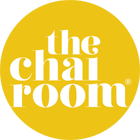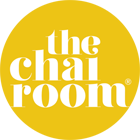Fatema chats with Bodhi - Fact or fiction? 6 major myths about tea
A huge thank you to our wonderful friends at Bodhi Restaurant for the chance to share our knowledge. For the original article, please visit Bodhi's website here.
What's the deal with tea? Is it good for us or not? We ask Fatema Khanbhai, founder of The Chai Room to shed some light on whether tea is healthy, if it ever goes off, and whether tea bags are better than loose leaf.

#1 Tea is bad for you
Tea has many virtues, such as being a contributor to longevity by stimulating the heart function and strengthening the immune system due to the characteristics present in the tea plants.
Tea also contains polyphenols which provide a significant portion of its taste and the health benefits. Polyphenols are a group of natural chemical substances found in plants. The two classes of polyphenols are tannins (found also in wine) and flavonoids.
When combined with other natural herbs and spices which have various health benefits, tea can be a great way to reduce stress levels. Drinking a hot cup of flavourful tea can be very satisfying.
Most tea for most people is good in moderation. That amount will be different for different people because tea has varying effects on individual bodies. So it's always important to note how you as an individual feel when you consume tea. And while there are many reputed health benefits of tea, equally some people may have dietary sensitivities to tea that make it a less than ideal beverage. Medical advice should be sought from a health professional for anything specific.
#2 Tea bags are better than loose leaf tea
Teabags can be made of both natural and/or synthetic material. Some of this material can be toxic, including bleach in paper-based teabags and microplastics in synthetic material.
Even if the material is safe, it can impart an extra taste into your tea, which changes its flavour. Loose leaf tea therefore gives you the best chance of experiencing tea that is unadulterated by the bag and will usually result in a more complex and aromatic infusion.
Supermarket-quality teabags are usually made from lower quality leaves and comprise mostly of "fannings" and "dust", so may also contain lower antioxidant content.
Many loose leaf teas are very versatile and can be blended with a variety of different herbs and spices which in combination with a good quality tea leaf can enhance the health benefits of your brew.
Teas which are made of long-leaved tea (like The Chai Room teas) are blended with all natural, native and traditional herbs and spices. As well as having the added health benefits they have a naturally sweet edge to them which can be quite satisfying.
#3 Tea is tea - it doesn’t matter where it comes from
Similar to grapes in wine, the geographic and conditions in which tea is cultivated affects its quality and flavour profile. So it’s important to know where your tea comes from, because not all teas are created equal.
It reflects well on the tea brand if it can tell you the source of their tea because it shows that they have taken care to choose their supplier and the terroir of the tea.
Drinkers are often comforted by knowing where their tea comes from for environmental and ethical reasons and it can help them understand the different flavour profiles of different source locations. The stronger the connection between the tea source and the drinker, the stronger the appreciation for the tea, its maker and the industry.
Appreciating tea also comes from understanding the difference in types of tea and how they are processed.
All teas are derived from the leaves of the Camellia sinensis tea plant. The five basic styles of tea are White, Green, Oolong, Black and Pu'erh.

Styles are produced by altering the shape and chemistry of the leaf through the different types of processing it goes through. Basic steps in tea processing include plucking, withering (allowing the leaves to wilt and soften), rolling (to shape the leaves and wring out the juices), oxidizing and firing (i.e: drying). The most crucial part, what defines the categories of tea, is oxidizing. Oxidation occurs when the enzymes in the tea leaf interact with oxygen.
The fundamental difference between green tea and black tea is that Green Tea is plucked, withered and rolled and not oxidized, while Black Tea utilises all five basic steps and is allowed to oxidize more completely.
Pu'erh Tea is a completely different art. Initially it undergoes a process similar to Green, but before the leaf is dried, it's aged either as loose-leaf tea or pressed into dense cakes and decorative shapes. The aging process lasts anywhere from a few months to several years. Very old, well-stored Pu'erhs are considered "living teas", just like wine. They are prized for their earthy, woodsy or musty aroma and rich, smooth taste.
#4 Tea aids digestion
Some teas are said to aid digestion but as each individual's physiology varies, it's not a guarantee this will be the case for everyone.
Tea can aid digestion because it is warm liquid and soothes and activates the digestive tract, providing hydration for the elimination of waste; this is the same effect as drinking warm water.
Some tea is said to boost metabolism, which may aid digestion; while some tea is fermented and can support beneficial gut bacteria. Tea can be a great, healthy alternative to other sugary or alcoholic drinks. For instance, The Chai Room Rosemary and Fennel chai is a great tea to enjoy after a meal with, with or without milk. Fennel and rosemary both support digestion and can help to reduce gas and inflammation.
Tea alone cannot fight disease or improve health. Tea must be complemented by a lifestyle that incorporates regular exercise, enough sleep, a diet with antioxidant rich vegetables and fruits, high-quality proteins, and small amounts of fats and sugars.
#5 Tea lasts forever
If tea is properly stored away from air, light and moisture, it should never spoil.
It is best to avoid moisture, excessive heat, light, air and strong, competing aromas (which may be absorbed by the tea). Each of these will degrade the quality of your leaves.
Stale tea doesn't taste as good as well-kept tea but it is generally still safe to drink. Increase your tea to water ratio and you may be able to salvage the flavour.
I recommend storing teas in Miron glass jars as they are air tight and do not let any UV light or aromas enter through the specially developed violet glass.
#6 Tea helps you relax
Tea is a uniting beverage that can be happily consumed with or without company. The art of making tea is a ritual that not only encourages a time to take oneself away from the hustle of life, but also the added health benefits should not be overlooked. Many people find tea a pleasant drink to relax with.
Tea also contains L-theanine which is an amino acid that occurs naturally in the Camellia plant which tempers the release of the caffeine, so tea tends to give you less of the steep jump and drop-off that coffee provides.
The benefits of the slow absorption of caffeine in tea is that it can help sharpen the mind, increase concentration and eliminate fatigue and instead offer a 'relaxed wakefulness' which is often used for meditation. Therefore making a good quality loose leaf tea can be the perfect companion to aid relaxation.














